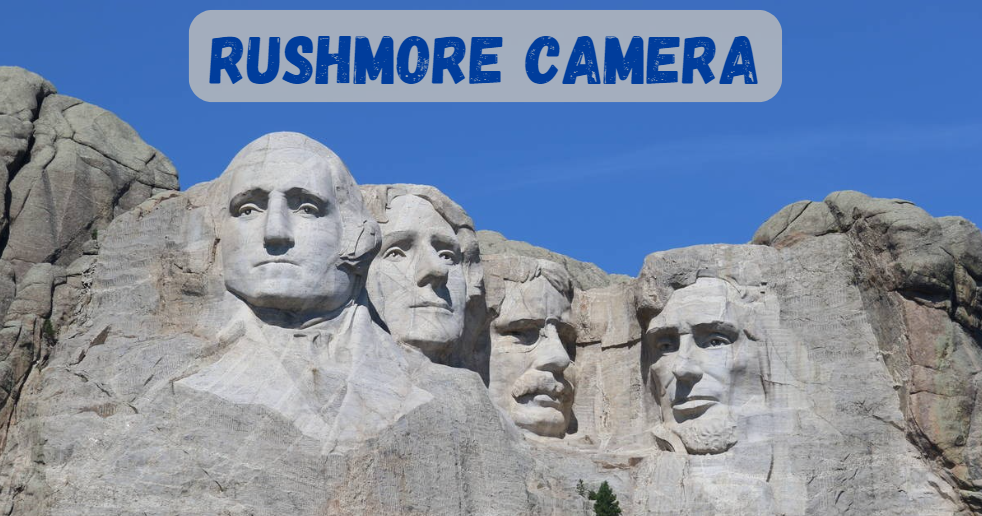Mount Rushmore is one of the most iconic landmarks in the United States, drawing millions of visitors each year. For those who can’t make the trip to South Dakota, the advent of technology has made it possible to experience the monument from anywhere in the world.
Through the Rushmore Camera, a live webcam provided by EarthCam in partnership with the National Park Service, people can enjoy real-time views of this historic site. This article delves into the technology behind the Rushmore Camera, its significance, and how it enhances the experience of viewing Mount Rushmore. We’ll also explore its impact on tourism, educational value, and more.
Contents
- 1 The Rushmore Camera: An Overview
- 2 The Technology Behind Rushmore Camera
- 3 The Cultural and Historical Significance of Mount Rushmore
- 4 The Impact of Rushmore Camera on Tourism
- 5 Educational Value of the Rushmore Camera
- 6 Environmental Impact and Conservation Efforts
- 7 The Future of the Rushmore Camera
- 8 FAQs About the Rushmore Camera
- 9 Conclusion: The Enduring Appeal of the Rushmore Camera
The Rushmore Camera: An Overview
The Rushmore Camera is a live-streaming webcam that offers uninterrupted views of Mount Rushmore. Positioned to capture the grandeur of the monument, the camera operates 24/7, allowing users to witness the changing light, weather conditions, and even special events at the site.
The Partnership: EarthCam and the National Park Service
The Rushmore Camera is the result of a collaboration between EarthCam, a leader in webcam technology, and the National Park Service. EarthCam is known for its network of high-quality live streaming cameras around the world, covering famous landmarks, construction sites, and natural wonders. Their partnership with the National Park Service ensures that viewers receive a reliable, high-definition stream of Mount Rushmore.
The Technology Behind Rushmore Camera
Understanding the technology that powers the Rushmore Camera gives us insight into how it delivers such a seamless viewing experience. The camera system used at Mount Rushmore is state-of-the-art, incorporating several features that enhance both the quality and accessibility of the feed.
High-Definition Video Streaming
The Rushmore Camera streams in high definition, ensuring that viewers can see every detail of the monument. This is particularly important given the intricacy of the carvings on Mount Rushmore, which depict the faces of four U.S. presidents: George Washington, Thomas Jefferson, Theodore Roosevelt, and Abraham Lincoln. The high-definition feed allows viewers to appreciate the artistry of the monument as if they were standing right in front of it.
Panoramic Views and Zoom Capabilities
The camera is equipped with panoramic view capabilities and zoom features. This allows the Rushmore Camera to provide sweeping views of the surrounding Black Hills as well as close-up shots of the monument itself.
The ability to zoom in on specific details of the carvings adds an interactive element to the viewing experience, letting users explore Mount Rushmore in ways that might not even be possible in person.
Weather and Time-Lapse Features
One of the fascinating aspects of the Rushmore Camera is its ability to capture the monument under various weather conditions and throughout different times of the day. Viewers can watch Mount Rushmore at sunrise, observe how the shadows play across the faces during the afternoon, and experience the monument illuminated at night.
The time-lapse feature, often available in archives, allows viewers to see a day’s worth of footage condensed into just a few minutes, highlighting the changing landscape around the monument.
The Cultural and Historical Significance of Mount Rushmore
Mount Rushmore is more than just a tourist attraction; it is a symbol of American history and culture. The monument was completed in 1941 and was designed by sculptor Gutzon Borglum. The four presidents depicted on the mountain were chosen to represent the founding, expansion, development, and preservation of the United States.
George Washington: The Nation’s Founding
George Washington, the first president of the United States, is considered the “Father of the Country.” His leadership during the American Revolution and his role in drafting the Constitution made him a natural choice to be featured on Mount Rushmore. The Rushmore Camera gives viewers a chance to contemplate Washington’s legacy as they gaze upon his likeness carved into the granite of the Black Hills.
Thomas Jefferson: The Nation’s Expansion
Thomas Jefferson, the third president, is best known for the Louisiana Purchase, which doubled the size of the United States. His role in expanding the nation’s borders is immortalized on Mount Rushmore. Through the Rushmore Camera, viewers can reflect on Jefferson’s contributions to the country’s growth and his vision for a vast, united republic.
Theodore Roosevelt: The Nation’s Development
Theodore Roosevelt, the 26th president, was a driving force behind the Progressive Era, championing policies that promoted economic reform, environmental conservation, and social justice. His place on Mount Rushmore symbolizes the development of the United States into a modern industrial power. The Rushmore Camera offers a window into the rugged landscape that Roosevelt so passionately sought to preserve.
Abraham Lincoln: The Nation’s Preservation
Abraham Lincoln, the 16th president, is revered for his leadership during the Civil War and his efforts to abolish slavery. His dedication to preserving the Union is a central theme of American history. The Rushmore Camera allows viewers to connect with Lincoln’s enduring legacy as they observe his likeness standing sentinel over the nation he fought to keep whole.
The Impact of Rushmore Camera on Tourism
The introduction of the Rushmore Camera has had a significant impact on tourism, both locally and virtually. While Mount Rushmore continues to attract millions of visitors annually, the webcam has expanded access to the monument, making it possible for people around the world to experience its majesty.
Virtual Tourism and Accessibility
The Rushmore Camera has opened up new possibilities for virtual tourism. For individuals who are unable to visit Mount Rushmore in person due to geographical, financial, or physical constraints, the webcam provides an accessible alternative. This has democratized the experience of visiting a national landmark, allowing a broader audience to engage with American history.
Promoting Interest and Future Visits
For many, viewing Mount Rushmore through the Rushmore Camera may be the first step toward planning an in-person visit. The webcam serves as a powerful marketing tool, showcasing the monument in real-time and encouraging potential tourists to add it to their travel itineraries. Seeing Mount Rushmore in different seasons and times of day can inspire viewers to experience the monument firsthand.
Enhancing the Visitor Experience
For those already planning a trip to Mount Rushmore, the Rushmore Camera enhances the experience by providing a preview of what to expect. Visitors can check the weather, view crowd levels, and even decide on the best time of day to visit based on the live feed. This can lead to a more informed and enjoyable visit, as tourists can plan their trip around optimal conditions.
Educational Value of the Rushmore Camera
Beyond tourism, the Rushmore Camera holds significant educational value. It serves as a tool for educators, students, and history enthusiasts to learn more about Mount Rushmore and the historical figures it represents.
A Virtual Classroom for History Lessons
Teachers can incorporate the Rushmore Camera into their lessons, allowing students to see the monument in real-time while discussing its historical significance. This can be particularly impactful for students who may never have the opportunity to visit Mount Rushmore in person. The webcam can serve as a visual aid in history lessons, bringing the past to life in a dynamic way.
Supporting Remote Learning
The rise of remote learning has increased the demand for virtual educational resources. The Rushmore Camera is an excellent example of how technology can support distance education. Whether through a live stream or archived footage, students can engage with Mount Rushmore as part of their curriculum, deepening their understanding of American history.
Interactive Learning Opportunities
The interactive nature of the Rushmore Camera allows students to explore the monument in ways that traditional classroom materials cannot. For example, a lesson on the construction of Mount Rushmore could be supplemented by time-lapse footage from the webcam, showing how weather and light affect the appearance of the monument. This adds a layer of engagement that can enhance students’ learning experience.
Environmental Impact and Conservation Efforts
The presence of the Rushmore Camera also ties into broader discussions about conservation and the environmental impact of tourism. By offering a virtual alternative to visiting the monument, the webcam contributes to the preservation of the natural environment around Mount Rushmore.
Reducing Environmental Footprint
Tourism, while economically beneficial, can have a significant environmental impact. The Rushmore Camera provides an option for reducing this impact by allowing people to experience the monument without traveling. This can help decrease the carbon footprint associated with transportation and reduce the wear and tear on the natural landscape surrounding Mount Rushmore.
Supporting Conservation Initiatives
The visibility provided by the Rushmore Camera can also draw attention to conservation initiatives at Mount Rushmore and the Black Hills. By showcasing the natural beauty of the area, the webcam encourages viewers to support efforts to preserve the environment. This could include donations to the National Park Service or participation in conservation programs.
Monitoring and Protecting the Monument
The webcam also serves a practical purpose in monitoring the condition of Mount Rushmore. By providing a continuous feed, the Rushmore Camera can help park officials keep an eye on the monument and surrounding areas for signs of erosion, vandalism, or other issues. This aids in the ongoing preservation efforts necessary to maintain the monument for future generations.
The Future of the Rushmore Camera
As technology continues to evolve, so too will the capabilities of the Rushmore Camera. Future developments could include enhanced interactivity, higher-resolution feeds, and additional camera angles that provide new perspectives on Mount Rushmore.
Potential Upgrades and Innovations
The future of the Rushmore Camera could involve integrating virtual reality (VR) technology, allowing users to experience the monument in an even more immersive way. Imagine putting on a VR headset and being able to “walk” around Mount Rushmore, exploring the monument from every angle. This could revolutionize how people interact with historical landmarks from the comfort of their homes.
Expanding the Reach of the Webcam
As more people gain access to high-speed internet, the reach of the Rushmore Camera will continue to grow. Efforts to promote the webcam through social media, educational platforms, and tourism websites will ensure that even more people can experience Mount Rushmore. Expanding the reach of the webcam also ties into efforts to make American history more accessible to a global audience.
Integrating with Other Educational Resources
The Rushmore Camera could become part of a broader suite of educational resources, including interactive websites, digital textbooks, and online courses. By integrating the webcam with other digital tools, educators can create a more comprehensive learning experience that brings together multiple aspects of American history, culture, and geography.
FAQs About the Rushmore Camera
1. What is the Rushmore Camera?
- The Rushmore Camera is a live-streaming webcam that provides real-time views of Mount Rushmore. It is a collaborative effort between EarthCam and the National Park Service.
2. Can I view the Rushmore Camera feed from anywhere in the world?
- Yes, the Rushmore Camera feed is accessible online, allowing people from all over the world to view Mount Rushmore in real-time.
3. Is the Rushmore Camera available 24/7?
- Yes, the Rushmore Camera operates around the clock, providing continuous coverage of Mount Rushmore.
4. Does the Rushmore Camera offer different angles or views?
- The camera provides a panoramic view of the monument and the surrounding landscape, with the ability to zoom in on specific details.
5. How can I use the Rushmore Camera for educational purposes?
- The Rushmore Camera can be used as a visual aid in history lessons, providing real-time or archived footage of Mount Rushmore to enhance students’ learning experience.
Conclusion: The Enduring Appeal of the Rushmore Camera
The Rushmore Camera is a remarkable technological achievement that has brought Mount Rushmore closer to people around the world. Whether you’re a history enthusiast, a teacher, or simply someone who appreciates the beauty of this iconic monument, the webcam offers a unique and accessible way to experience Mount Rushmore.
As we look to the future, the Rushmore Camera will undoubtedly continue to evolve, offering even more ways to connect with this symbol of American heritage.




